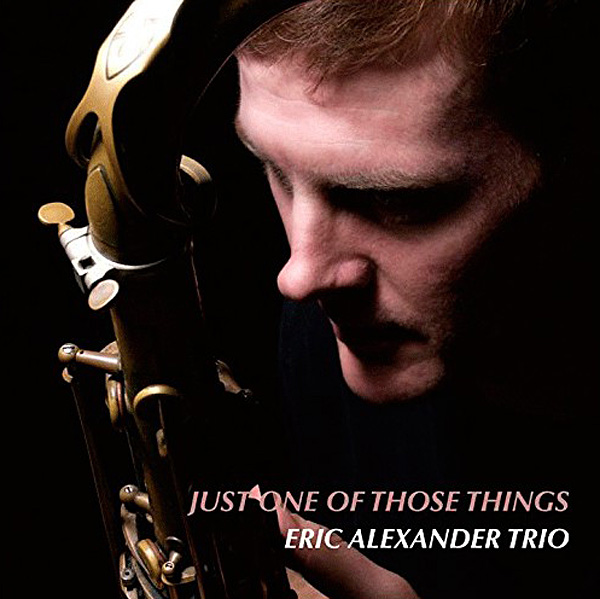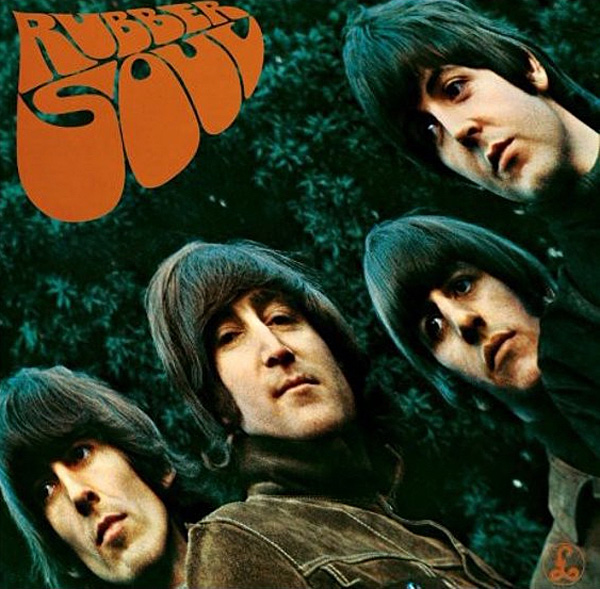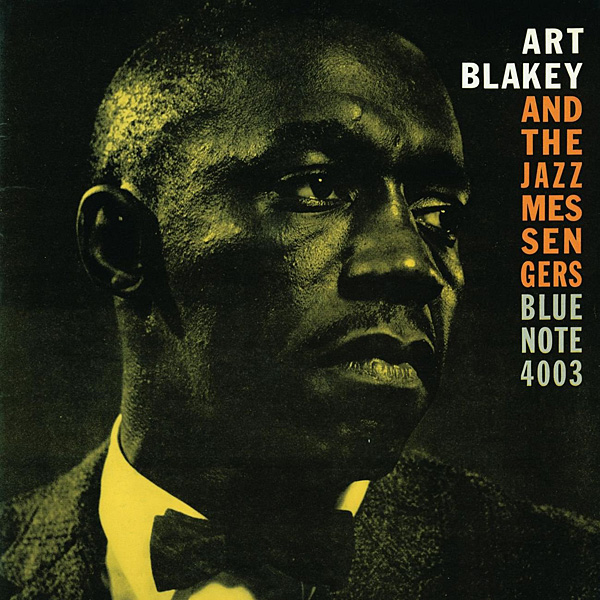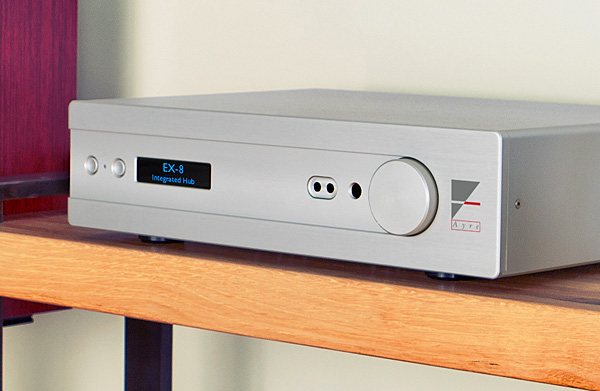| Columns Retired Columns & Blogs |
An excellent review. If this model is half as good as the AX-5 Integrated, it is a keeper.
Setup
For spinning vinyl, I used my Thorens TD 124 turntable with its Jelco 350S tonearm and Clearaudio Concept MC cart. Phono preamp duties were performed by the Sculpture A Mini Nano Step-Up (which extracted new richness, punch, and impact from my vinyl rig) feeding a Tavish Audio Design Adagio phono stage. The Adagio's outputs entered the EX-8 2.0's single-ended inputs via a 2m pair of Triode Wire Labs Spirit II interconnects—or into the other integrated amplifiers whenever they were used for comparison. Roon/Tidal Streaming was enabled via a 1m AudioQuest Forest USB cable. My Denafrips Ares II DAC facilitated comparison via a 1m pair of Shindo RCA interconnects. A 2m run of AudioQuest Robin Hood speaker cables mated the EX-8 (and the other integrated amplifiers) to three speaker pairs over the course of the review: DeVore Fidelity O/96s, Klipsch Forte IVs, and GoldenEar BRXs.
Listening
During the 1960s and '70s, hot rod buffs and shade-tree mechanics would whistle at a souped-up Stingray or T-Bird, declaring, "that's one sweet honey of a ride!" Well, the Ayre EX-8 2.0 is one sweet honey of an integrated amplifier, "sweet" being the operative word. Its outstanding sonic trait is its focused, pristine clarity, a gently scrubbed vision that frames music with refinement, richness, and lucidity. The EX-8 2.0 is a supple communicator with a clear midrange joined to a warm, sculpted low end. The 2.0 pulls off the neat trick of being revealing and resolving without sounding analytical or mechanical. You hear a lot but somehow you never—or rarely—hear too much.

The EX-8's treble is pure and nonfatiguing, with a roundness of tone and rightness of musical line. It made the most of John Lennon's hollow-body electric guitar on "In My Life" and "What Goes On" (LP, Rubber Soul, Odeon SMO 84 066), giving it a glistening, radiant quality that further improved that black disc's already visceral sound. Sinne Eeg's vocal on "What A Little Moonlight Can Do" (4-LP box, Explorations in Sound Volume 1 & Volume 2 (Marantz/Vinyl Me Please) sounded focused and airy with ample tone—sinewy, polished, and direct. The song's drums and percussion were brilliantly vibrant. Similarly, Eric Alexander's tenor saxophone on "Stardust" (LP, Just One of Those Things, Venus VHJD-118) had weight and exquisite tone, sonority, and clarity, connecting intimately with this listener in his cozy listening warren.

The EX-8's midrange, like its treble, is largely transparent and artifact-free with a dollop of warmth. When reproducing drums, strings, guitars, and voices, it allowed the notes noticeable sustain and decay trails whenever they are present on the vinyl disc. I was never aware of the midrange (unless I focused on it), or its acoustical-electrical relationship to the treble. It simply let music speak.
Some reviewers have called the EX-8's low end lean. It's true that it doesn't editorialize. It's not hyped or dark or leavened toward mucho bass in ways that alter the sound of the recording. To make an analogy that's perhaps a bit odd: Some modern vinyl reissues create uber bass to supposedly correct original pressing ills. Well, the EX-8 doesn't do that; it's true to the source. If deep bass is present on a recording, the EX-8 will deliver it in your room, accurately, generously, and clearly. If it's not there, the Ayre won't add it.
The EX-8 2.0 is the most coherent and tonally rich and compelling solid state integrated amp I've had in house. Though it's inherently sweet and intimate, it didn't overtly color the music. It didn't favor one frequency over another; it's an equal-opportunity amp. Joined to the vinyl front-end described above and the DeVore Fidelity O/96 loudspeakers, the EX-8 2.0 made music a relaxing, flowing, immersive event. It let me forget the hubbub outside my Greenwich Village window and just enjoy my tunes.
Returning to Eric Alexander's Just One of Those Things, the Ayre delivered his swinging, sensuous hard bop cut with excellent tenor tone, ample bass weight, low-end sumptuousness, and natural dynamics. Instrumental lines were delivered with speed and good imaging on a broad soundstage.
The EX-8 2.0's dynamics excelled on Stravinsky's The Firebird performed by Antal Dorati and the London Symphony Orchestra (LP, Mercury 130553 MGV) and The Rare Wagner with the London Symphony Orchestra conducted by Mark Janowski (LP, EMI ASD 2837); the EX-8 depicted The Firebird's many dynamic subtleties on a wide, deep stage. Dynamic contrasts between the piece's introductory string and reed ensembles and later, fast-paced sections were surprising, making me run for the remote to protect my ears. The amp portrayed back-of-the-stage brass and close-up glockenspiel with equal lushness and textural accuracy. Orchestral instruments were textured and easy to follow. These feats were repeated on The Rare Wagner, from the dynamism of the conductor's pacing to the music's deep lows and honeyed treble.
While the Ayre didn't match my three-times-as-expensive Shindo tubed separates for tone, texture, and immediacy—imaging was similar—it surpassed my reference amplification for clarity and resolution. I could live with either sonic personality; each provides a different view on the art of music reproduction.

Engaging the Ayre's ESS ES9038Q2M-based DAC, I played Steely Dan's Everything Must Go (FLAC 44.1kHz, 16bit, MQA 44.1kHz, Warner Bros.) and The Allman Brothers Band's 1969 debut recording (FLAC 44.1kHz, Atlantic). The Dan's "Lunch with Gina" sounded rich and liquid with especially airy treble enabling superb vocal clarity, and super-punchy bass and snare drum. Donald Fagen's hoarse howl was laid bare and clean. Playing The Allman's "Dreams," the trademark Ayre sweetness imbued deep organ notes and electric bass with lushness. An upper-midrange-to-treble crispness aided vocals and guitars, with excellent sustain.
Comparison: The Denafrips Ares II
Comparing the DAC in the EX-8 2.0 to the Denafrips Ares II, I found the Chinese-made Ares less pure, smooth, and liquid-sounding than the Ayre's DAC, which played the same music with more punch, better dynamics, and a slightly forward presentation. The Ayre's DAC had a more definable house sound: crisp and rich. The Denafrips was perhaps less well behaved but sounded more powerful.
Comparison: Schiit Audio Ragnarok 2
Returning to vinyl, I exchanged the Ayre for Schiit's Ragnarok 2 integrated. Through the Schiit, instruments were less well defined than through the Ayre. The Schiit's massive, reverberant soundstage offered an entirely different view of the music. Reverb and decay increased. The Wagner disc was heard as if from the fifth row through the Schiit; as if from the first row with the Ayre. The soundfield on Eric Alexander's disc grew larger and more resonant, the studio space playing a larger role in what I heard. Acoustic bass was larger and wetter but lacked the control the Ayre imposed. Low-end weight increased, but low-end focus declined. Via the Schiit, music seemed less contained, less intimate, more charged, wide open, and wildly dynamic.
Comparison: Parasound Hint 6 Halo
The Parasound Hint 6 Halo brought new contrasts to the listening party. The Parasound hit a sonic flavor smack in the middle between the Ayre and the Schiit, bettering the Schiit's dynamics and with a better sorted, more coherent presentation within a large, similarly sized soundfield. The Parasound had richer tone than the Schiit; individual instrumental and vocal lines were clearer, and instruments seemed closer. Bass was tighter, treble better extended, direct, and smoother than that of the Schiit. Compared to the EX-8 2.0's trademark intimacy, sweetness, and refinement, the Parasound was blunter, plainer spoken, perhaps more neutral. The Parasound created its own version of refinement, but it lacked the Ayre's sonic richness.
With the Klipsch Forte IVs
The EX-8 2.0 swiftly connected with the speed of the Klipsch Forte IV, which further expressed the amp's rich tone, midrange clarity, and low-end prowess. The Forte is less revealing of tone and inner detail than the DeVore O/96, but it's a fun, dynamic speaker that talks fast and produces copious bass from its 12" and 15" woofers. The Ayre couldn't control the Forte IV's low end, but then I'm not sure that this speaker can be controlled in a room such as mine where bass modes are easily excited. But the sound with the Forte IV was easy and flowing with a large soundstage, which however was not as well-defined as through the O/96s. The Ayre's crystalline treble and clear midrange provided a good match for the Forte IV's speed, dynamics, and larger-than-life personality.

With the Golden Ear BRXs
The GoldenEar BRXs, which are specified at a sensitivity of 90dB/2.83V/m but due to their challenging impedance characteristic require more power than either the DeVores or the Klipsches, nevertheless fell under the Ayre's spell. Playing a slew of '60s-era Blue Note Liberty pressings, the GoldenEar/Ayre EX-8 2.0 combo revealed the spicy treble, midrange warmth, and occasional low-end softness of these Rudy Van Gelder classics. The trumpet of Donald Byrd's The Cat Walk (LP, Blue Note 84075) was stunningly clear, liquid, and real sounding. Joe Henderson's tenor saxophone had bite and tartness on Andrew Hill's Black Fire (LP, Blue Note BST 84151). Wayne Shorter's tenor saxophone and Lee Morgan's trumpet were portrayed with spit, fire, and energy on Art Blakey and The Jazz Messengers (LP, Blue Note 4003). The Ayre played all these LPs with punch and vigor, tied to the BRX's top-notch imaging, slightly dry but revealing ribbon tweeter, and somewhat soft but effective bass.

Conclusion
There's a good supply of high-quality integrated amplifiers available for less than $10,000 including the Cambridge Audio Edge A, which has a built-in DAC but no streaming connection ($6000), the European Audio Team E-Glo I, a pure, tubed integrated amp with no digital-conversion capabilities ($9995 with standard tubes), and the Luxman L-509x, which adds a phono input but doesn't do digital $9495) (footnote 4). The Ayre does digital but not phono. With its pure treble, clear and rich midrange, ample low end, and coherence, the Ayre is the finest solid state integrated I've had in my house. (The EAT E-Glo is the finest tubed integrated.) If you're auditioning integrated amplifiers near its price, it deserves an audition.

An excellent review. If this model is half as good as the AX-5 Integrated, it is a keeper.

I guess this proves, once again, that all manufacturers send special high performance non-standard products to reviewers for review in front of the world.
(Insert rolling eyes emoji here.)

what this proves,once more,is that inadequate packing equates to manufacturer profit and customer loss.

Umm...
"It appeared that the review sample had suffered some kind of shock in transit from Ken Micallef's place to mine—the top panel was dented—"
That's on the manufacturer? They didn't do the packaging for that part of the journey. You still could be right, but...